sculpture
4 Achieved forms
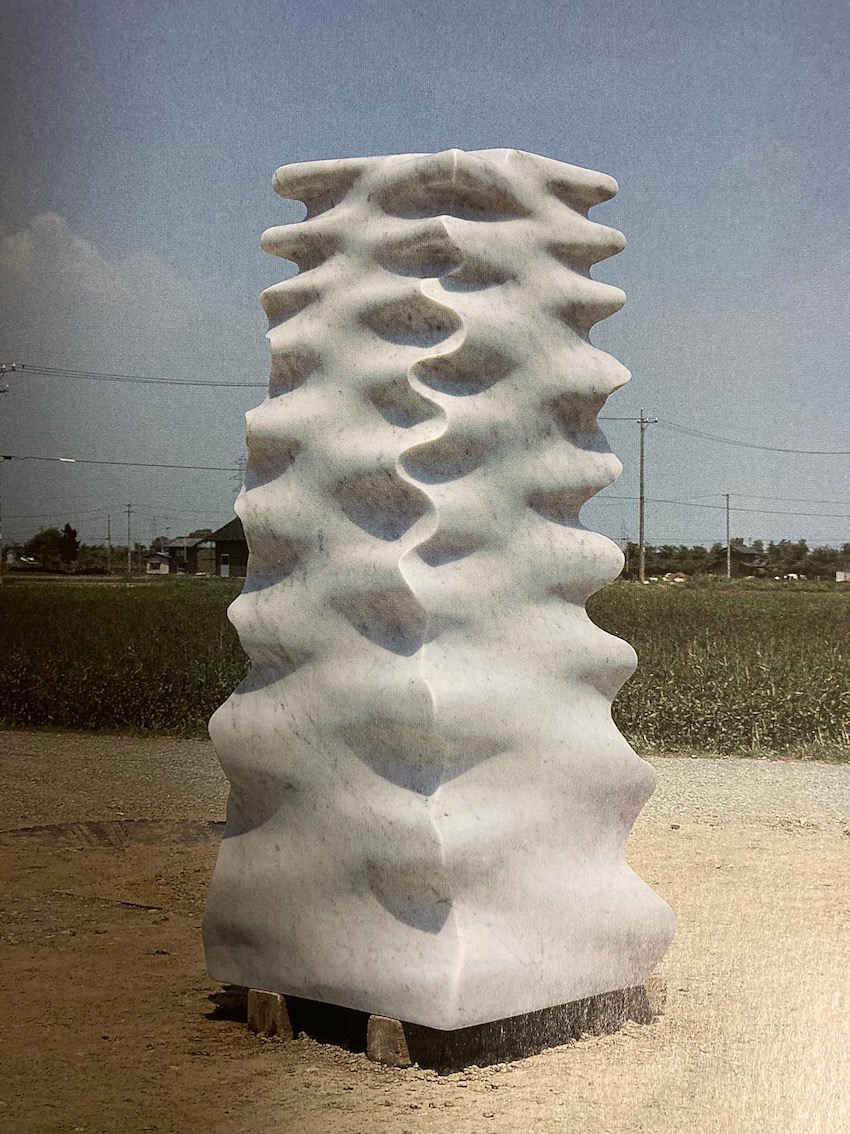
Oscillo-Complexe
(300 cm) Museum Hakone – Japon 1981
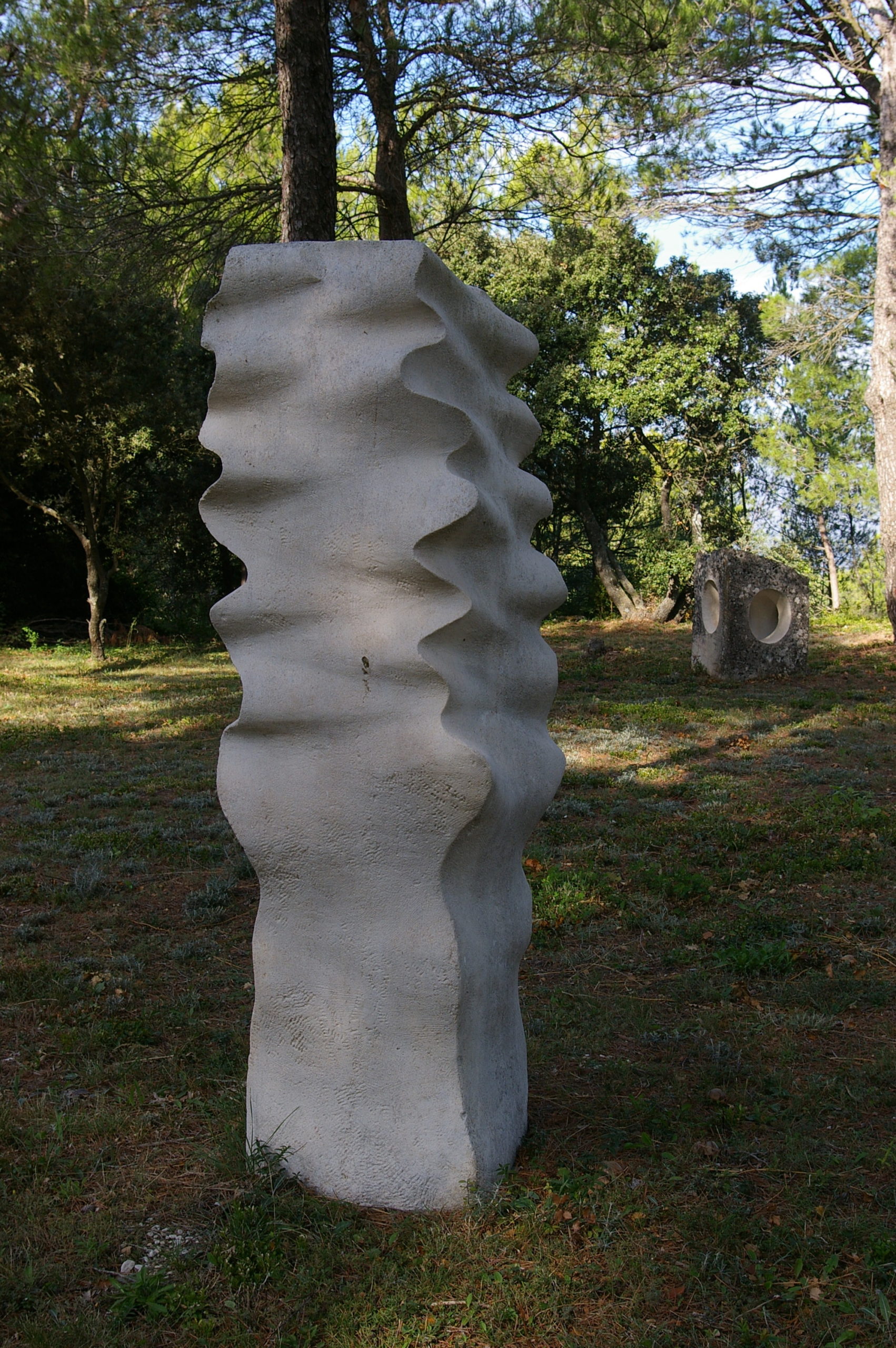
Oscillo-Tour
(200 cm) – Lacoste
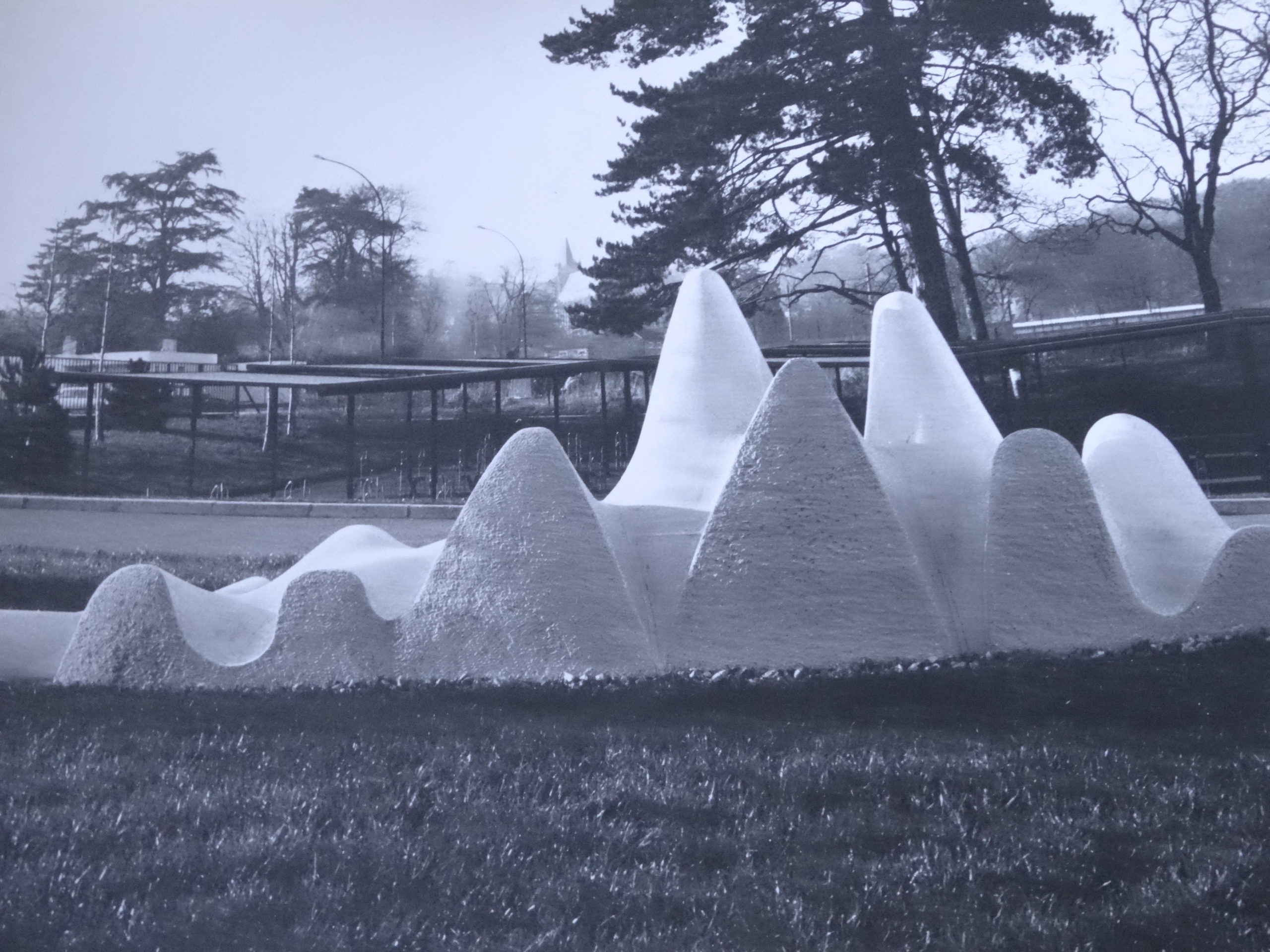
Oscillo-escalier
(stone / 2.0m x 6.0 x 2.3 / May 1977) Villeneuve d’Ascq
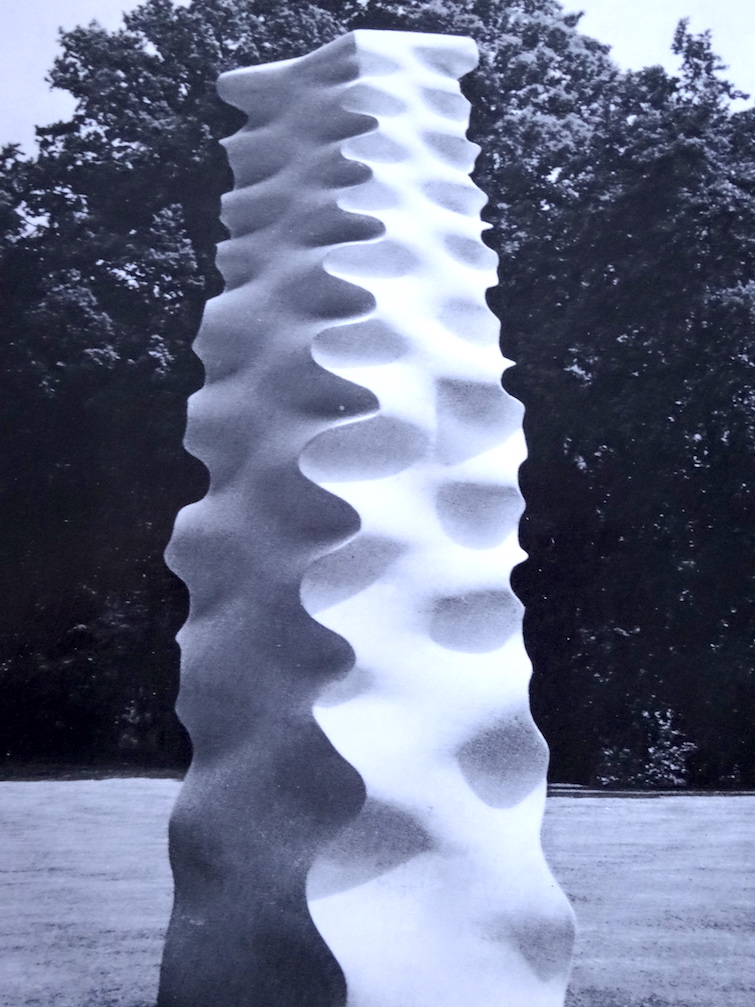
Fumée blanche
(White smoke)
(stone / 3.1 m x 1.1 x 0.9 / 1975 / Middelheim Open-Air Sculpture Museum, Antwerp, Belgium)
The Sculpture
of the Oscillation
Oscillo-Relief, circa (1972-1982)
Oscillo-Relief is the cut shape obtained by the vertical oscillation movement and horizontal oscillation of an electrical resistance. This free form does not result from a preliminary plan, but the technique requires precise control. Oscillo-Relief is a fundamental invention of Mizui. He applied it to sculpture in 1972. Oscillo-complex (stone / 3 mx 1.3 x 1.2 / 1981 / Hakone Open Air Museum, Nagano Prefecture, 2nd Henry Moore Grand Prix Competition) . The artist was invited to the Herry Moor Prize. This 7-ton sculpture was created in Nancy and transferred by plane to Japan for installation.
The Opening Wall, (1972)
concrete, 450 x 1300 x 140 cm, Lycée technique de Rambouillet, France, is the first work for which Mizui spoke of “Oscillo-Relief”. He then developed this technique for more than ten years.

When the side seen is in shadow, the second plan visible in the central gap mysteriously lights up.
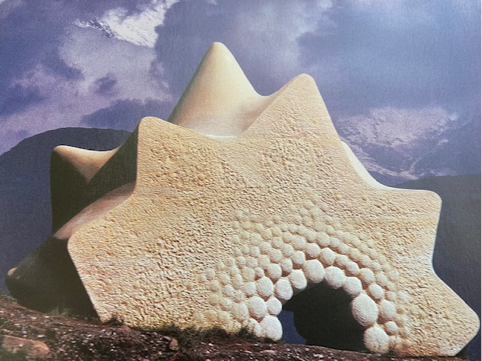
La Corne d’abondance,
(The Horn of Plenty, 1973)
(stone, 300 x 400 x 100 cm), exhibited in the open air at the Assy plateau, for the project “Sculptures in the mountains – Poem in space”, which brings together some twenty artists who are the most representative of contemporary sculpture in Europe. , in America and Japan around a poem by Jean-Pierre Lemesle. The sculptures were installed in the south facing the Mont-Blanc massif. The artist sought the form that coexists with the movement of the mountain.
Oscillo-complex
1981, stone, 300 x 130 x 120 cm, Hakone, Japon
The artist was invited to the Herry Moor Prize. This 5 ton sculpture was created in Nancy and airlifted to Japan for installation at the Hakone Open Air Museum in Utsukushi-ga-hara in Kanagawa Prefecture. Opened in 1969, the Hakone Open Air Museum permanently exhibits around 100 outdoor sculptures, covering an area of 70,000 m², as well as other 19th and 20th century works by Japanese and Western artists. The Picasso Pavilion, added to the museum in 1984 from a collection of 188 works, now houses a collection of 300 works by the artist. The Henry Moore collection comprises 36 works, and is one of the most important in the world.
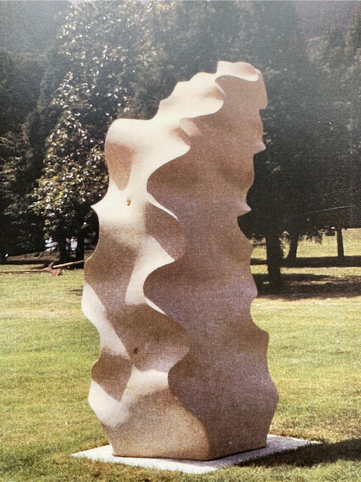

Arc of Clouds
(Arc des Nuages) (stone / 3,6 m x 5,6 x 1,6 / june 1978)
Lycée Michel-Montaigne de Bordeaux
The swinging motion in the form of an arc.
ZIG ZAG
1973
The artist began to work with polystyrene blocks, cutting them out. He has produced around ten works of this type. In the fifties, Parisian artists liked to establish their workshops in Provence. New York painter Bernard Pfriem opened an art school in the center of the village of Lacoste, bringing together American students. This school is housed in a large house next to the former castle of the Marquis de Sade. For twenty years, Mizui remained in touch with this school and every summer worked there on the creation of a sculpted work together with his students.

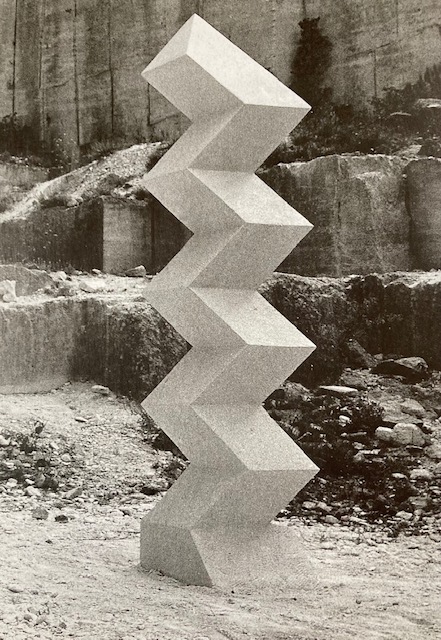
Zig et Zag I
(stone / 2,0m x 0,4 x 0,4 / juillet 1973 / Savannah College of Art and Design, Lacoste)
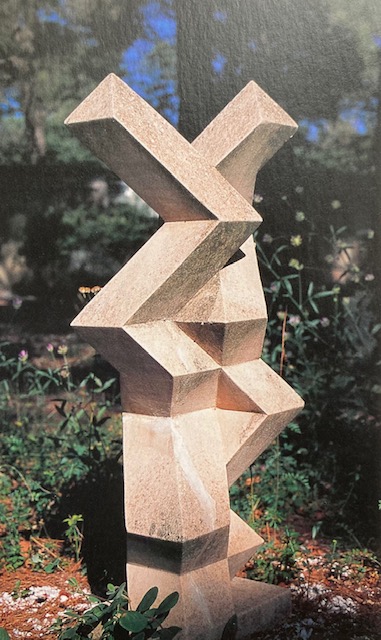
Zig et Zag IV
(stone / 0,8m x 0,25 x 0,25 / december 1974 / Lacoste)

The Wall Sculpture,
Since 1964
“Cosmos” (stone / 15m x 18 x 0.06 / 1970 / Lycée Louis Armand in Villefranche-sur-Saône ).
360 flagstones of Comblanchien, unit of 6 cm thick, are firmly fixed on the wall. Mizui himself said,
“I wanted to create a shadow graphics and light evoking heaven, earth and man.”.
The wall sculpture recalls, in formal terms, Walls of Fossiles and “Macrocosme et Microcosme”.

Fête de Mer
(Festival of Sea) (stone / 1.3m x 20.0 x 0.35 / March 1977) C.E.S de Bourbourg
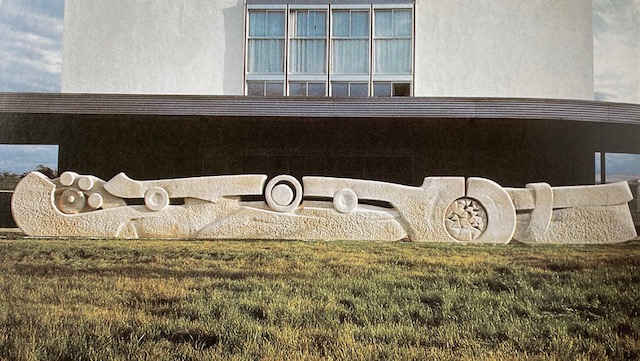
La mer
(The Sea) (stone / 1.3m x 15.0 x 0.35 / September 1970) C.E.S de Châteauroux
The sculpture with
“big head”
1960 – 1971
“Homage to Negev” 1960-1971 (marble / 3.7 m x 1.7 x 0.6 / 1962 / Negev, Israel, Symposium). Work produced for a Symposium in Israel. Regarding this experience, the artist expressed himself in these words: “It was brainwashing living for two months in this Negev desert, I had the feeling that in the face of the vastness of nature, all I could do would be a drop of water in the sea. sea. I understood for the first time this humility in front of the desert with my sculpture. When I drilled the hole at the top, my sculpture was completed, I felt like the sun was rising over me. “


Le mistral
(stone/ 2,5 mx 70,0 x 0,4/ october 1970 / collège du Pesquier, Gardanne )
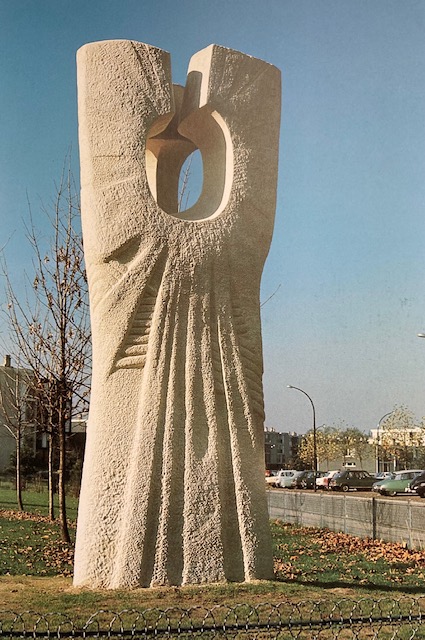
Gardien du soleil
(Gardian of the Sun) (stone / 4.0m x 1.0 x 1.0 / November 1973) Groupe Scolaire de Vigneux-sur- seine
